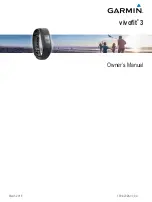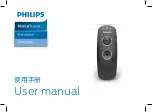
Appendices
374
AMS (Alternate Modulation
Source) List
Physical and MIDI controllers
Off
This means that no modulation source is selected.
Note Number
This is the note’s MIDI note number, from 0 (C-2) to 127
(G9).
Velocity
This is the note’s MIDI note-on velocity.
Exp. Velocity (Exponential Velocity)
This is MIDI note-on velocity through an exponential curve.
The curve means that low velocities won’t have very much
effect, and the difference between two lower velocity values
won’t be very noticeable.
On the other hand, high velocities produce increasingly
greater effects, and the difference between any two higher
velocity values will be more pronounced.
Poly After
Polyphonic aftertouch allows a different aftertouch value for
each note. This can be received from external MIDI devices
or generated by the internal sequencer. The M50 keyboard
itself does not generate poly aftertouch, however.
After Touch
The effect will be applied by channel aftertouch messages
from the M50’s sequence data or received from MIDI IN.
JS X
This is the horizontal movement of the main joystick. It also
receives MIDI Pitchbend.
JS+Y: CC#01
This is the vertical movement of the main joystick, upwards
from the center. It also receives MIDI CC#01 (mod wheel).
JS–Y: CC#02
This is the vertical movement of the main joystick,
downwards from the center. It also receives MIDI CC#02
(breath controller).
JS +Y & AT/2 (Joy Stick +Y & After Touch/2)
The effect will be controlled by the joY (Vertical
upward) and by aftertouch. In this case, the effect of
aftertouch will be only half of the specified intensity.
JS –Y & AT/2 (Joy Stick –Y & After Touch/2)
The effect will be controlled by the joystick –Y (Vertical
downward) and by aftertouch. In this case, the effect of
aftertouch will be only half of the specified intensity.
Pedal: CC#04 (Foot Pedal: CC#04)
This AMS source receives MIDI CC#04. It can also be
generated by a foot pedal connected to the rear-panel
ASSIGNABLE PEDAL input, if the Global
Foot Pedal
Assign
parameter is set to Foot Pedal (CC#04). For more
information, please see “Foot Pedal Assignments” on
page 385.
ValueSldr: #18 (Value Slider: CC#18)
You can use the value slider as a modulation source, but
only when the following are true:
• You’re on the Prog P0: Play page, and the big Program
name is selected, or
• You’re on the Combi P0: Play page, and the big
Combination name is selected.
In these cases only, the value slider sends MIDI CC#18, and
can be used as a modulation source.
KnobMod1: #17 (Realtime Knob Modulation1: CC#17)
This AMS source always responds to MIDI CC#17. A MIDI
value of 0 causes the maximum negative modulation; 64
(center) means no modulation; and 127 causes the maximum
positive modulation. (You can invert this response, if
desired, by using a negative AMS intensity.)
It also usually corresponds on the control surface to
Realtime Control B mode knob 1 on the Controllers Setup
page; but this will depend on the Realtime Control Slider
Assign settings of each individual Program, Combination,
and Song.
Basically, there are two separate factors: a physical knob
named B mode knob 1, and an AMS source named “Knob
Mod.1: #17.” This provides a great deal of flexibility–but’s
it’s also easy to link the two together. To do so:
1. Go to the current mode’s Controllers page.
2. Set knob 1-B’s Realtime Control Knob Assign to Knob
Mod.1: #17.
For more information, please see “1–7: Controllers Setup”
on page 18, and “Realtime Control Knobs 1–4 Assignments”
on page 383.
KnobMod2: #19 (Realtime Knob Modulation2: CC#19)
This AMS source always responds to MIDI CC#19, and will
usually also correspond to control surface to Realtime
Control B mode knob 2. For more information, please see
“KnobMod1: #17 (Realtime Knob Modulation1: CC#17)” on
page 374.
KnobMod3: #20 (Realtime Knob Modulation3: CC#20)
This AMS source always responds to MIDI CC#20, and will
usually also correspond to control surface to Realtime
Control B mode knob 3. For more information, please see
“KnobMod1: #17 (Realtime Knob Modulation1: CC#17)” on
page 374.
KnobMod4: #21 (Realtime Knob Modulation4: CC#21)
This AMS source always responds to MIDI CC#21, and will
usually also correspond to control surface to Realtime
Control B mode knob 4. For more information, please see
“KnobMod1: #17 (Realtime Knob Modulation1: CC#17)” on
page 374.
Kn] (Realtime Knob Modul])
Kn] (Realtime Knob Modul])
Kn] (Realtime Knob Modul])
Kn] (Realtime Knob Modul])
With these AMS sources, the knob position and the direction
of the resulting change are different than KnobMod1: #17–
KnobMod4: #21. If AMS intensity is set to a positive (+)
value, rotating the knob to the far left will produce an AMS
effect of 0. Rotating the knob toward the right will apply
change only in the positive direction. (If the intensity is set
to a negative value, the result will be the opposite.)
Damper: #64
This is the Damper pedal, also sometimes called the sustain
pedal. It corresponds to MIDI CC#64.
When using Korg’s optional half-damper pedal, the DS-1H,
this AMS source is continuous–not just on/off.
Porta.SW: #65
This is the MIDI portamento switch (CC#65), which also
enables and disables portamento.
Sostenuto: #66
This is the MIDI sostenuto pedal (CC#66).
Soft: CC#67
This is the MIDI oft pedal (CC#67).
SW 1: CC#80 (SW 1 Modulation: CC#80)
This is CC#80, which is the default for assignable front-
panel switch 1 (SW1). To use SW1 and SW2 as AMS sources:
Summary of Contents for M50-73
Page 1: ...2 E Parameter Guide ...
Page 86: ...Program mode 78 ...
Page 132: ...Combination mode 124 ...
Page 222: ...Sequencer mode 214 ...
Page 297: ...Effect Mixer Block Diagrams Main Outputs 289 ...
Page 418: ...Appendices 410 ...
















































